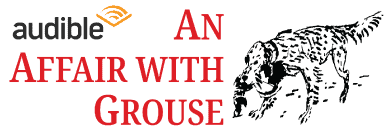Home » Project Upland Listen » Hunting Dog Confidential Podcast » The German Influence of Hunting Dogs in America
The German Influence of Hunting Dogs in America

A.J. DeRosa, founder of Project Upland, is a New England…
From their home base in Winnipeg, Craig Koshyk and Lisa…
Jennifer Wapenski is the Director of Operations and Managing Partner…
The German influence on hunting dog breeds dates back to the 19th century when German settlers brought their traditions to North America.
The episode, hosted by Craig Koshyk, a renowned dog historian, explores how early German immigrants, particularly those who settled in Texas, may have introduced hunting dogs before the popularization of breeds like the German Shorthaired Pointer (GSP). Koshyk, author of Pointing Dogs, Volume One: The Continentals and Pointing Dogs, Volume Two: The British and Irish Breeds, provides historically accurate insights, suggesting that settlers arriving in the 1830s and 1840s could have brought ancestral dog breeds, challenging the belief that German gundogs first appeared in America in the 1930s.
The episode highlights Prince Karl of Solms-Braunfels, who led German settlers to Texas and founded New Braunfels, and his nephew, Prince Albrecht of Solms-Braunfels, who played a key role in hunting dog breeding. Prince Albrecht initially favored British breeds such as English Pointers, English Setters, Gordon Setters, and Irish Setters. His Wolfsmühle Kennels, described as “a vast, beautiful establishment,” housed top-tier hunting dogs. However, rising German nationalism led to a shift from British breeds to the development of German versatile hunting dogs. Dutch breeder Edward Korthals, supported by Prince Albrecht, developed the Wirehaired Pointing Griffon, an all-purpose hunting breed.
The episode also discusses the Jagdhorn, or German hunting horn, traditionally used to communicate during hunts. Koshyk describes how it was used in Germany to signal key moments such as the start and end of the hunt and to honor game taken. “Specific notes or patterns or songs were used to communicate various messages to hunters over a great distance.” In North America, the tradition is largely absent except within German-affiliated hunting clubs such as the Deutsch-Drahthaar and Deutsch-Kurzhaar clubs.
The episode concludes by connecting German hunting practices to modern North American hunting culture. German testing systems and breeding philosophies influenced the establishment of the North American Versatile Hunting Dog Association (NAVHDA) in the 1960s, preserving the versatile hunting dog model in North America.
A.J. DeRosa, founder of Project Upland, is a New England native with over 35 years of hunting experience across three continents. His passion for upland birds and side-by-side shotguns has taken him around the world, uncovering the stories of people and places connected to the uplands. First published in 2004, he wrote The Urban Deer Complex in 2014 and soon discovered a love for filmmaking, which led to the award-winning Project Upland film series. A.J.'s dedication to wildlife drives his advocacy for conservation policy and habitat funding at both federal and state levels. He serves as Vice Chair of the New Hampshire Fish & Game Commission, giving back to his community. You can often find A.J. and his Wirehaired Pointing Griffon, Grim, hunting in the mountains of New England—or wherever the birds lead them.
From their home base in Winnipeg, Craig Koshyk and Lisa Trottier travel all over hunting everything from snipe, woodcock to grouse, geese and pheasants. In the 1990s they began a quest to research, photograph, and hunt over all of the pointing breeds from continental Europe and published Pointing Dogs, Volume One: The Continentals. The follow-up to the first volume, Pointing Dogs, Volume Two, the British and Irish Breeds, is slated for release in 2020.
Jennifer Wapenski is the Director of Operations and Managing Partner at Project Upland Media Group. She has a lifelong passion for the outdoors, dogs, and wildlife; as an adult, she discovered that upland bird and waterfowl hunting were natural extensions of these interests. What started as initial curiosity soon escalated into a life-changing pursuit of conservation, advocacy, and education. Jennifer serves in a variety of roles such as the Breed Warden for the Deutsch Langhaar—Gruppe Nordamerika breed club and on an advisory committee for the Washington Department of Fish and Wildlife.




Thanks for yet another wonderful podcast. I would add that the Czechs, like the Germans, are heavily into hunting horns, both at their field tests for Cesky Fouseks and when they hunt. Do you know in what country that tradition originated? Here in North America, we have occasionally had real horns at our Cesky Fousek North America field tests. However, as you mentioned, it is difficult to find accomplished horn musicians. For years, we have played digital songs at the start of your field tests on someone’s truck stereo system from a CD that our Czech colleagues gave us…and now use the online versions. It is fun tradition.